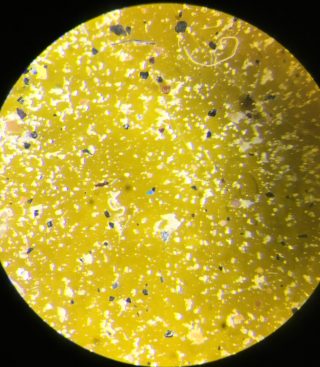 Microplastics may be small in size, measuring less than 5mm, but don’t let their tiny size fool you. These pollutants can greatly impact our environment and pose risks to human health. Understanding their widespread presence and far-reaching effects is paramount in our efforts to protect and preserve marine ecosystems.
Microplastics may be small in size, measuring less than 5mm, but don’t let their tiny size fool you. These pollutants can greatly impact our environment and pose risks to human health. Understanding their widespread presence and far-reaching effects is paramount in our efforts to protect and preserve marine ecosystems.
When it comes to researching microplastics, scientists have to tackle all sorts of places like oceans, lakes, rivers, soil, air, and organisms (including humans). Each environmental compartment presents unique challenges when collecting and studying samples. Moreover, microplastics are hidden in other natural particles, making them difficult to detect and quantify. In our research group at Aalborg University, Denmark, we like to say that measuring microplastics in the environment is like finding a needle in a haystack.
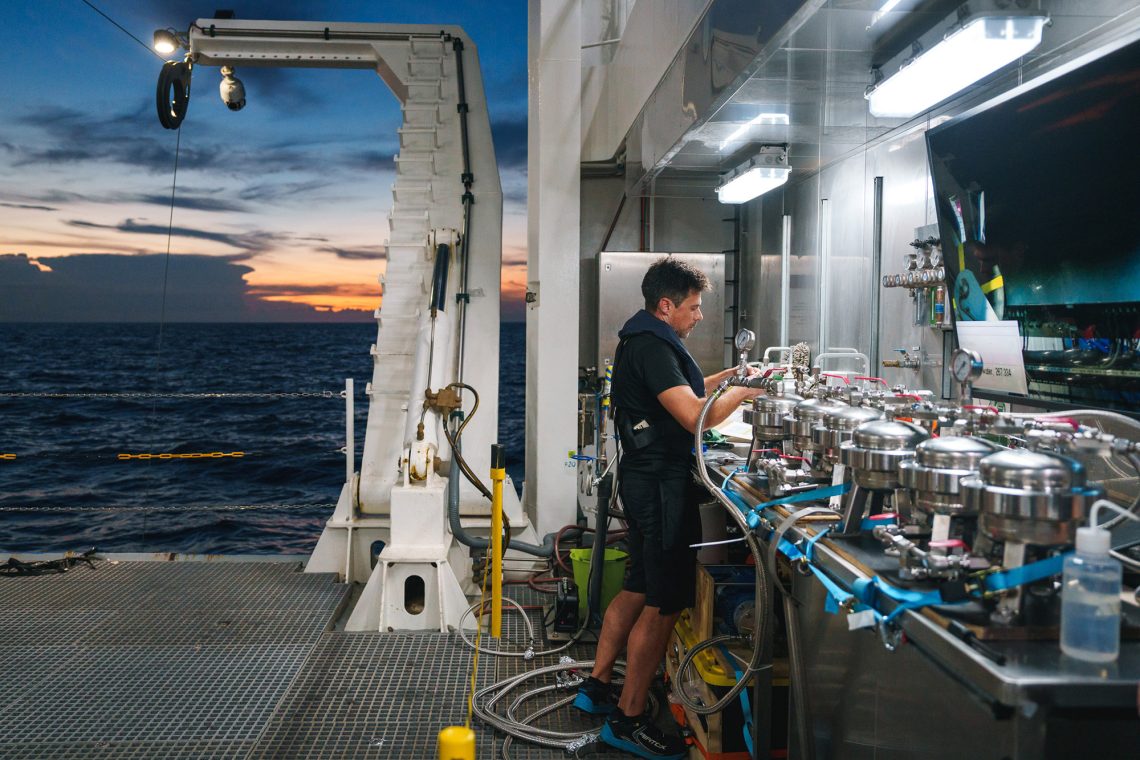 Studying microplastics is not an easy task due to the diverse physical and chemical properties of these pollutants, such as their composition, size, shape, color, and origin. There is also an added level of complexity that makes microplastic research even trickier: the lack of standardization in the field, which makes it a bit like navigating through uncharted waters. So, scientists are putting in extra effort to harmonize methodologies, allowing them to piece together all the findings and get a clearer picture of microplastic pollution.
Studying microplastics is not an easy task due to the diverse physical and chemical properties of these pollutants, such as their composition, size, shape, color, and origin. There is also an added level of complexity that makes microplastic research even trickier: the lack of standardization in the field, which makes it a bit like navigating through uncharted waters. So, scientists are putting in extra effort to harmonize methodologies, allowing them to piece together all the findings and get a clearer picture of microplastic pollution. 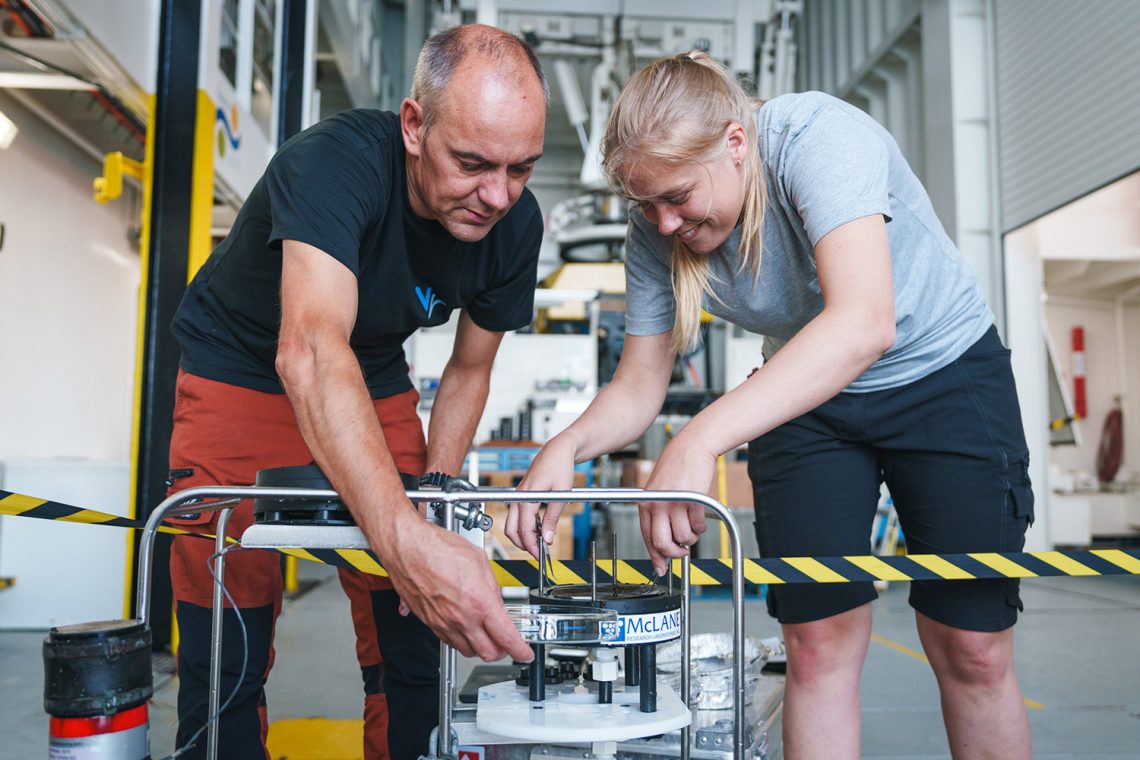
Identifying and quantifying microplastics starts with proper sample collection. During the cruise “Dynamics of Sinking Microplastics,” we are focusing on microplastics in the water column, which requires specific methods to ensure we get a reliable snapshot of the environment at a particular moment. The most common way to collect samples in marine waters is by using modified plankton nets. However, these nets have a coarse mesh size (around 300 µm), which limits their effectiveness. To overcome this issue, we use pumps and fine steel mesh filters (10 or 1 µm), which allow us to filter large volumes of water while capturing smaller microplastics.
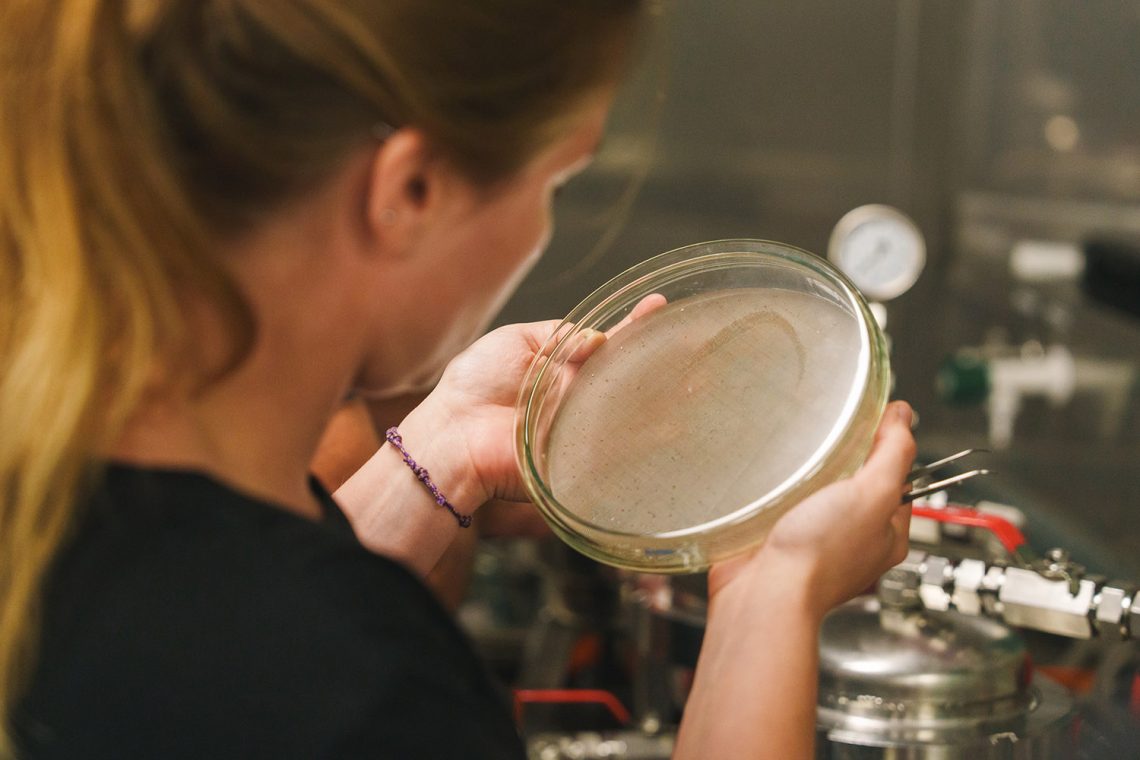 One crucial detail to keep in mind is the plastic contamination during sampling. We are mindful of the plastic items we use and prefer non-plastic alternatives like metal gear and glassware. Most of our lab and sampling equipment was heated at 500oC (932o F) to remove any plastic residue before getting on board. Additionally, we try to wear mostly cotton clothes to avoid introducing microplastics shed from synthetic fibers like polyester and nylon. Yet, despite our efforts, microplastics are everywhere, and some contamination is unavoidable. For this reason, we collect “field blanks” by exposing a glass jar with filtered water when working in the field. This way, we can account for the microplastics that may have originated from our surroundings during the sampling activities.
One crucial detail to keep in mind is the plastic contamination during sampling. We are mindful of the plastic items we use and prefer non-plastic alternatives like metal gear and glassware. Most of our lab and sampling equipment was heated at 500oC (932o F) to remove any plastic residue before getting on board. Additionally, we try to wear mostly cotton clothes to avoid introducing microplastics shed from synthetic fibers like polyester and nylon. Yet, despite our efforts, microplastics are everywhere, and some contamination is unavoidable. For this reason, we collect “field blanks” by exposing a glass jar with filtered water when working in the field. This way, we can account for the microplastics that may have originated from our surroundings during the sampling activities.
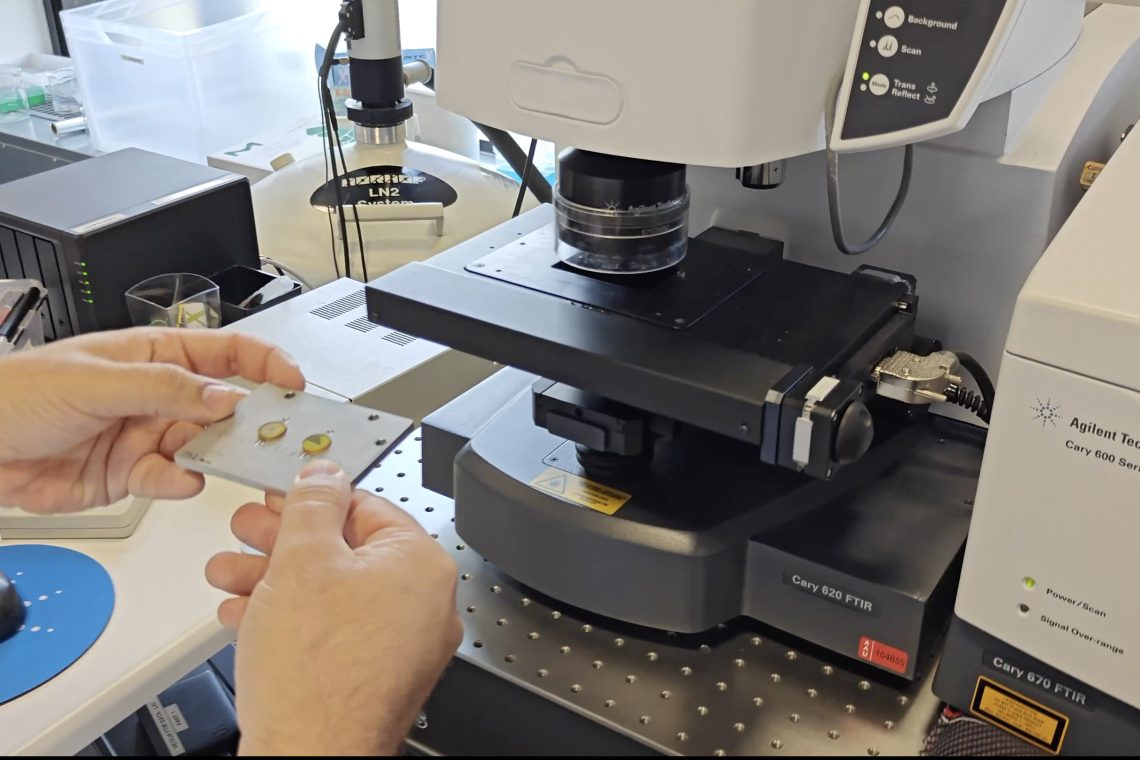 Once the samples will be back in our lab, the real challenge begins. As we try to find the needle in the haystack, we need to get rid of the hay. Removing all the unwanted organic material is no easy task and is, in fact, the most time-consuming part of microplastic analysis. We use a mix of chemical and biochemical reactions to remove organic materials, involving enzymes and oxidizing agents. Additionally, we must physically separate the microplastics from the omnipresent inorganic particles found in each sample. This complex protocol is crucial for obtaining accurate results, as any errors could lead to biased data. After this demanding process, we can finally analyze our samples.
Once the samples will be back in our lab, the real challenge begins. As we try to find the needle in the haystack, we need to get rid of the hay. Removing all the unwanted organic material is no easy task and is, in fact, the most time-consuming part of microplastic analysis. We use a mix of chemical and biochemical reactions to remove organic materials, involving enzymes and oxidizing agents. Additionally, we must physically separate the microplastics from the omnipresent inorganic particles found in each sample. This complex protocol is crucial for obtaining accurate results, as any errors could lead to biased data. After this demanding process, we can finally analyze our samples.
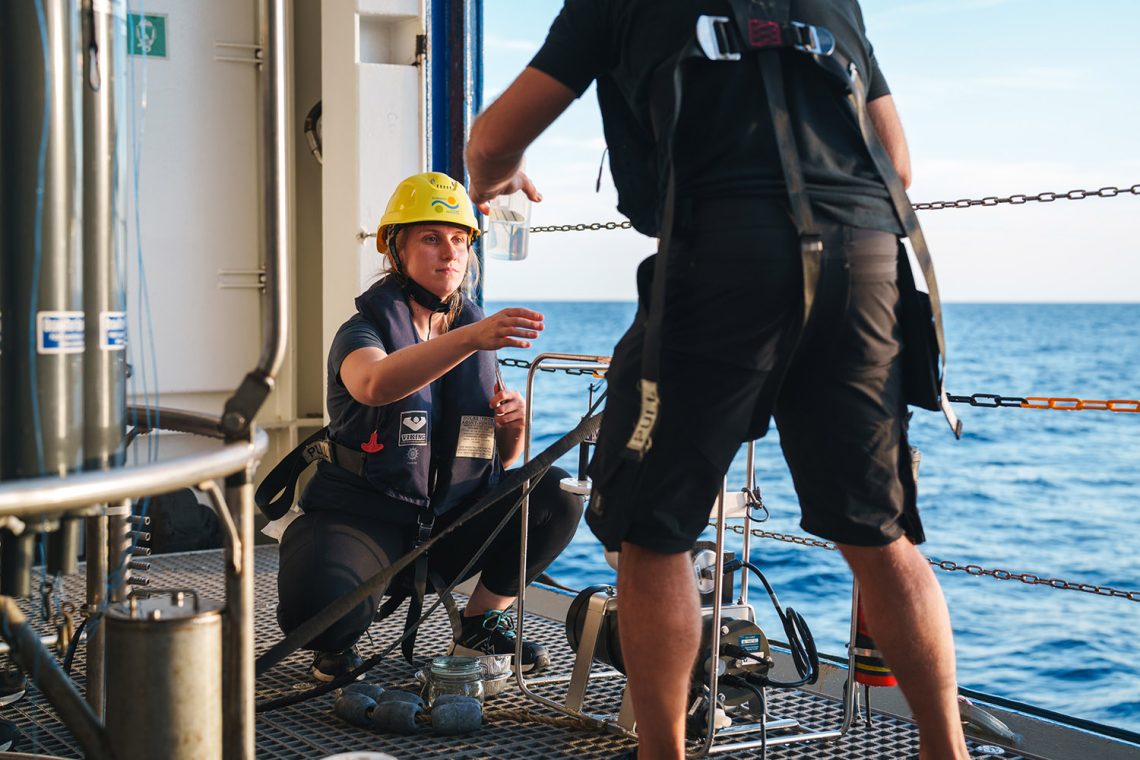 Microplastics are identified using a combination of physical, chemical, and spectroscopic methods. Each approach has its own strengths and limitations. Still, since microplastics are multifaceted pollutants, multiple features are required to be measured and characterized, including abundance (number of particles), size, shape, and mass. The number of microplastics and their size and shape play a crucial role in understanding their potential harm to organisms. The more there are, and the smaller they get, the higher the risk. However, as time goes on, these plastics break down into even smaller particles, making numbers and sizes not ideal for describing plastic pollution on a large scale. Mass is way more reliable when estimating plastic loads to the environment because it is a conservative unit, remaining constant even when particles break down. By shifting the focus to microplastic mass measurements, we gain a more accurate and comprehensive understanding of the true extent of microplastic pollution, guiding us toward effective strategies for environmental protection.
Microplastics are identified using a combination of physical, chemical, and spectroscopic methods. Each approach has its own strengths and limitations. Still, since microplastics are multifaceted pollutants, multiple features are required to be measured and characterized, including abundance (number of particles), size, shape, and mass. The number of microplastics and their size and shape play a crucial role in understanding their potential harm to organisms. The more there are, and the smaller they get, the higher the risk. However, as time goes on, these plastics break down into even smaller particles, making numbers and sizes not ideal for describing plastic pollution on a large scale. Mass is way more reliable when estimating plastic loads to the environment because it is a conservative unit, remaining constant even when particles break down. By shifting the focus to microplastic mass measurements, we gain a more accurate and comprehensive understanding of the true extent of microplastic pollution, guiding us toward effective strategies for environmental protection.


